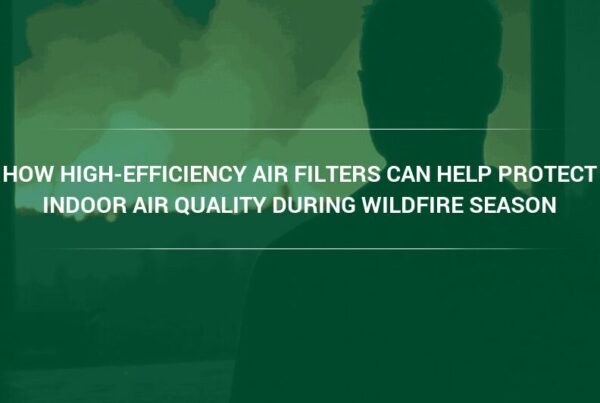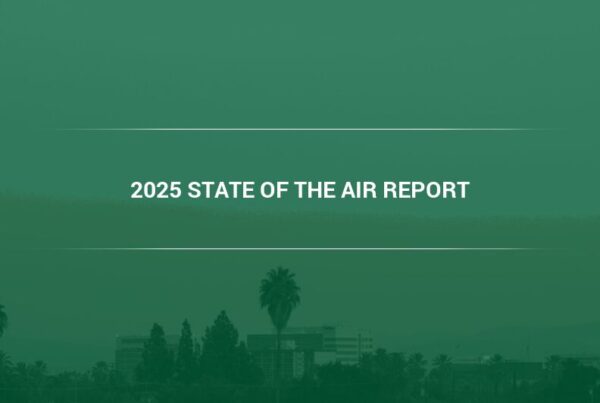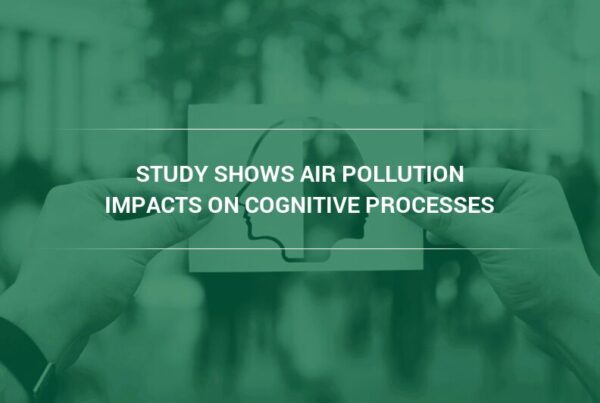COP26 Highlights Air Pollution-Related Deaths and the Global Need for Air Filtration
The devastating impact of air pollution on human health was a central issue at the United Nations Climate Change Conference (COP26).
A delegation of mothers from around the world — Brazil, India, Nigeria, Poland, South Africa, and the UK, specifically — presented a letter to the president of the conference calling on world leaders to limit air pollution and protect children who are being harmed by its effects. One of the women’s daughters, who passed away last year, was the first person in the UK to have air pollution listed as her official cause of death.
The letter was signed by 500 parent groups from 44 countries, showing a global need to protect children from the effects of air pollution.
The World Health Organization names air pollution as one of the biggest threats to human health globally. In 2019 in Delhi, which is one of the world’s most polluted cities, air pollution contributed to the deaths of more people than any other risk factor. The risk of fatal air pollution-related health complications is greater for children from poor families, a New York Times investigation found, because they spend more time outdoors and are more likely to use wood-burning stoves for cooking and as a source of heat.
Global Health Risks Associated with Air Pollution — What Are the Health Effects of Air Pollution?
In September of this year, the World Health Organization (W.H.O.) published a report detailing the effects of air pollution on human health. Exposure to polluted air is known to cause seven million premature deaths yearly and can aggravate asthma, cause lung infections, and reduce lung growth and function. In 2019, at least 90% of people across the world lived in areas where pollution levels exceeded W.H.O. guidelines.
The effects of air pollution on health are seen close to home, too. In the United States, at least 40% of people live in areas with dangerous levels of pollution per the same W.H.O. guidelines. According to the Environmental Defense Fund, “children, the elderly, people with existing diseases, minority and low-income communities are particularly vulnerable to adverse health outcomes and economic impacts, such as missed work days, from exposure to air pollution.”
The exact effects of exposure to air pollution depend on the composition of the pollution itself, as well as the duration and intensity of the exposure. For example, long-term exposure to polluted air from living in a city will have different effects on different parts of the human body than short-term exposure to intense smog, wildfire smoke, or other abnormally high concentrations of pollution in one area.
Air Pollution and the Respiratory System
A long history of research indicates that short-term exposure events involving high concentrations of air pollutants cause adverse effects on the lungs and other parts of the respiratory system. But long-term exposure to lower concentrations of pollution can have similar effects, including:
- Nose and throat irritation.
- Bronchoconstriction (narrowing of the airways) and dyspnoea (difficulty breathing), particularly in asthmatic individuals, following exposure to sulfur dioxide, nitrogen oxides, and some heavy metals.
- Worsened symptoms in individuals with lung disease, lung lesions, and other respiratory conditions.
- Increased susceptibility to respiratory infections, especially following exposure to nitrogen oxides.
- Lung cancer, asthma, and emphysema caused by exposure to heavy metals.
Air Pollution and the Cardiovascular System
The cardiovascular system is closely connected to the respiratory system and is responsible for circulating oxygen around the body. Effects of air pollution on the heart, blood vessels, and other parts of the cardiovascular system include:
- Reduced organ function, including brain function after carbon monoxide exposure, because carbon monoxide bonds to hemoglobin in the blood and reduces the capacity to deliver oxygen to vital organs and other parts of the body. This can lead to impaired concentration, slow reflexes, and confusion.
- Ischemic heart disease can be caused by exposure to dioxins, which are formed when chlorine containing compounds and hydrocarbons are burned together.
- Tachycardia (a heartbeat exceeding 100 beats per minute), increased blood pressure, and anemia following exposure to heavy metal air pollution.
Air Pollution and the Nervous System
The nervous system is mainly affected by exposure to dioxins and heavy metal air pollution. Health effects of air pollution on the nervous system can include:
- Neurotoxicity leads to neuropathies (nerve damage) in the brain, which can lead to symptoms including memory disturbances, sleep disorders, anger, fatigue, hand tremors, blurred vision, and slurred speech. These effects have been observed in patients exposed to arsenic, lead, and mercury in air pollution.
- Lead exposure from air pollution is known to injure neurotransmitter circuitry; in particular, the dopamine system, the glutamate system, and the NMDA receptor complex, which are all important for memory function, are most affected by lead exposure.
- In children, dioxin exposure decreases the speed of nerve conduction and impairs mental development.
Air Pollution and the Urinary System
Exposure to heavy metals can cause kidney damage, as well as increase the likelihood of developing kidney stones and nephrocalcinosis (excessive calcium deposits within kidney tissue).
Air Pollution and the Digestive System
Dioxin exposure causes an increase of certain liver enzymes in the blood, which indicates liver cell damage. Dioxin exposure is also linked to gastrointestinal and liver cancers.
Air Filtration to Protect Human Health
Efforts to reduce the source of air pollution globally to prevent premature deaths and harmed health will require long-term commitments from governments and industries across the world. But that doesn’t mean that the devastating effects of air pollution on our lungs can’t be alleviated locally.
Pollutants can be filtered out of the air before they enter public buildings (including offices, schools, grocery stores, hospitals and healthcare centers) and residential buildings with high efficiency air filters engineered to capture the particles and gases that create indoor air pollution. The result is cleaner air with every breath.. Read more about commercial and residential air filtration solutions here.
About Camfil Clean Air Solutions
For more than half a century, Camfil has been helping people breathe cleaner air. As a leading manufacturer of premium clean air solutions, we provide commercial and industrial systems for air filtration and air pollution control that improve worker and equipment productivity, minimize energy use, and benefit human health and the environment. We firmly believe that the best solutions for our customers are the best solutions for our planet, too. That’s why every step of the way – from design to delivery and across the product life cycle – we consider the impact of what we do on people and on the world around us. Through a fresh approach to problem-solving, innovative design, precise process control, and a strong customer focus we aim to conserve more, use less and find better ways – so we can all breathe easier.
The Camfil Group is headquartered in Stockholm, Sweden, and has 33 manufacturing sites, six R&D centers, local sales offices in 30 countries, and about 4,800 employees and growing. We proudly serve and support customers in a wide variety of industries and in communities across the world. To discover how Camfil USA can help you to protect people, processes and the environment, visit us at www.camfil.us/
##
Media Contact:
Lynne Laake
Camfil USA Air Filters
T: 888.599.6620
E: Lynne.Laake@camfil.com
F: Friend Camfil USA on Facebook
T: Follow Camfil USA on Twitter
Y: Watch Camfil Videos on YouTube
L: Follow our LinkedIn Page
Sources:



